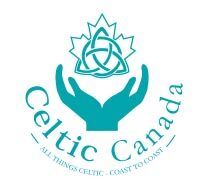The Parks Canada Agency has confirmed that the bones found in Forillon National Park in 2011 and 2016 are indeed from the Carricks shipwreck. The ship carrying 180 passengers had departed from Sligo, Ireland and was headed to the Port of Quebec when it sank off the coast of Cap-des-Rosiers in 1847. This conclusion has been reached given the location of the human remains and the context of their burial, along with analyzes carried out by the bioarchelogy laboratory at the Université de Montréal.
The bones of three individuals between the ages of 7 and 12 washed up on the beach at Cap-des-Rosiers in 2011 following a violent storm that damaged the shoreline. It was hypothesized that these remains were from the Carricks shipwreck. According to historical accounts, the bodies of the shipwrecked were buried on the beach. In 2016, Parks Canada carried out a preventative archeological dig before undertaking restoration work on the coastal ecosystem at Cap-des-Rosiers. During these digs, the remains of a further 18 individuals were discovered, bringing the total number up to 21. Most were the remains of women and children.
Analyzes have confirmed the hypothesis that the remains were from the Carricks shipwreck by making it possible to determine that these individuals followed a diet typical of that of a rural population dependent on agriculture, and based mainly on potato cultivation. This diet was typical of the population of Ireland in the first half of the 19th century. Analyzes also revealed that the shipwrecked people suffered from pathologies, most probably caused by malnutrition, itself caused by the famine then raging in Ireland.
After consulting with the citizens of Cap-des-Rosiers and members of the Irish community, it was decided that the human remains will be buried near the Irish Memorial on Cap-des-Rosiers Beach at a ceremony to be held in the summer of 2019.
The Parks Canada Agency is recognized as a world leader for heritage conservation. The Agency is responsible for protecting Canada’s natural and cultural heritage and showcasing outstanding examples from across the country. Science and history go hand in hand when it comes to interpreting the remains of our past.
Quotes
“During the Great Famine of Ireland in 1847, Canada became the home of many Irish immigrants. The tragic events of the Carricks shipwreck are a startling reminder of just how difficult the journey was for the travellers and that not everybody was lucky enough to reach their new home. Today’s announcement is very significant for Irish families whose ancestors were Carricks passengers. This shipwreck reflects an important part of Canadian history.”
The Honourable Diane Lebouthillier,
Minister of National Revenue and Member of Parliament for Gaspésie — Les Îles-de-la-Madeleine
Quick facts
- According to historical sources, it is estimated that between 120 and 150 people died when the Carricks sank. Of these, 87 bodies were found and only 48 people survived this tragic event.
- Following a public consultation in the spring of 2017, Parks Canada announced that the Irish Memorial, which was threatened by erosion, would be relocated to the top of the beach at Cap-des-Rosiers.
- This monument was erected in 1900 by St. Patrick’s Parish in Montreal in memory of the shipwrecked passengers. The ship’s bell—which was found on September 24, 1968, on the beach at Blanc-Sablon on Quebec’s North Shore—is located next to the monument.
- In consultation with the Saint-Alban parish council, the human remains of the 21 discovered shipwrecked will be buried near the Irish Memorial this summer, and a memorial will be erected to honour their memory.
- From 1832 to 1937, all ships had to make a mandatory stop at Grosse Île, which was then used as a quarantine station for the Port of Quebec. Without this catastrophic accident, the Carricks would also have followed this route.









